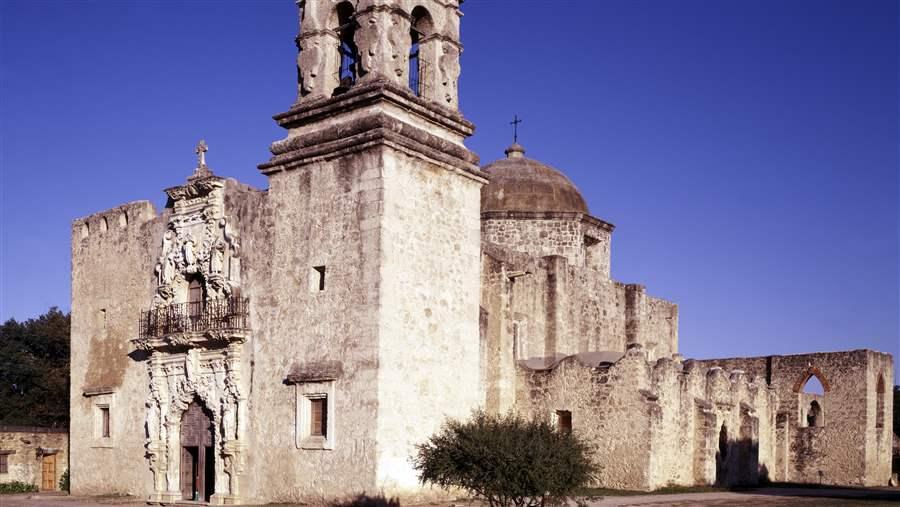Discover San Antonio Missions National Historical Park Tx: A Journey Via Time
Discover San Antonio Missions National Historical Park Tx: A Journey Via Time
Blog Article
Reveal the Social Treasures of Texas at the San Antonio Missions National Historic Park
Entering the San Antonio Missions National Historic Park is like getting in a site to a bygone era, where the rich tapestry of Texas history unfolds among the old stone walls and tranquil yards. The objectives, deeply rooted in both Spanish and Aboriginal cultures, stand as testimony to a time when faith, tradition, and neighborhood linked to form the landscape we see today. Each goal informs an unique tale, offering a peek right into the past that is both exciting and provocative. As visitors roam via these hallowed premises, they are certain to uncover a bonanza of cultural relevance waiting to be explored.
Background of San Antonio Missions
The beginnings of the San Antonio Missions can be traced back to the 18th century when Spanish promoters developed these spiritual outposts in Texas. These goals were built with the function of spreading out Christianity and converting the aboriginal population to Catholicism. The initial objective, Mission San Antonio de Padua, was started in 1718, adhered to by Goal San Jose in 1720, Mission San Juan Capistrano in 1731, and Goal San Francisco de la Espada in 1731. These objectives were not only places of praise but also functioned as centers for farming, industry, and education, playing a significant duty in the growth of the area. With time, the goals came to be successful areas with churches, living quarters, workshops, and farmland.
Despite facing challenges such as illness, conflicts with Native American people, and political modifications, the goals proceeded to operate for several years. Today, the San Antonio Objectives stand as a testimony to the rich social heritage of Texas and supply a look into the history of Spanish colonization in the area.
Architectural Wonders of the Missions

Each mission within the San Antonio Missions National Historic Park boasts one-of-a-kind building attributes. The Objective San José, understood as the "Queen of the Objectives," excites site visitors with its grand church embellished with fancy makings and a striking rose home window. In comparison, the Objective San Juan Capistrano showcases an easier layout with its moderate bell tower and simple yet elegant church.
The building marvels of the objectives not just serve as historic sites yet likewise as living testimonies to the cultural blend that defines Texas' rich heritage - San Antonio Missions National Historical Park. Visitors can check out these structures, marvel at their detailed details, and obtain a deeper admiration for the workmanship and artistry of the past
Social Significance of Goal Concepcion
With its unique red rock walls and complex geometric layouts, Objective Concepcion stands as a testament to the withstanding cultural legacy of the San Antonio Missions National Historical Park. Developed in the very early 18th century, Mission Concepcion is renowned for its well-preserved frescoes, which portray a blend of Spanish, Indigenous American, and Mesoamerican impacts. These lively frescoes not just showcase the imaginative abilities of the individuals who produced them yet likewise function as a graph of the cultural fusion that took place within the objective walls.
Beyond its architectural charm, Mission Concepcion holds considerable cultural relevance as a website where aboriginal individuals were introduced to European personalizeds and Catholicism. The mission played a pivotal role in shaping the cultural landscape of Texas, functioning as a center for religious, social, and economic tasks. Today, Goal Concepcion continues to be a location of cultural significance, drawing in site visitors from around the globe who look for to check out and appreciate its rich background and architectural marvels.
Aboriginal Influence on Mission Life

Evident via the day-to-day communications and social exchanges within Goal Concepcion, aboriginal influences played an essential function fit the textile of mission life in the 18th century. Aboriginal areas brought a riches of expertise and skills that considerably affected different aspects of mission life. Their experience in agriculture, workmanship, and typical recovery methods not only maintained the objectives however also enriched the cultural landscape within the objective walls.
Native influence prolonged past useful skills, permeating right into spiritual practices and artistic expressions. Native ideas and custom-mades come together with Catholic mentors, resulting in a special syncretic mix that specified the spiritual life of the goals. Native craftsmens likewise left a long lasting mark on the missions via their intricate craftsmanship, obvious in the detailed makings and dynamic frescoes that decorate the objective churches.
Preservation Efforts and Future Strategies
The integration of aboriginal influences within the textile of objective life at San Antonio Missions National Historic Park has actually spurred comprehensive conservation initiatives and calculated future plans targeted at protecting and enhancing the social treasures housed within these you could look here historic websites. Conservation efforts at the park are diverse, consisting of conservation of the building structures, protection of the surrounding natural setting, and paperwork of the abundant cultural heritage installed in the goals. Through collaborations with neighborhood areas, federal government firms, and cultural companies, the park has actually applied conservation jobs to deal with issues such as disintegration, architectural stability, and historical interpretation.
Looking ahead, the San Antonio Missions National Historical Park has ambitious future strategies to additional intensify its social importance. These plans involve broadening educational programs, improving visitor experiences through interactive exhibits and excursions, and promoting ongoing research study to strengthen understanding of the missions' historical context. By prioritizing preservation and advancement, the park intends to make sure that these cultural prizes stay accessible and purposeful for generations to find.

Conclusion
The objectives, particularly Mission Concepcion, show the impact of aboriginal populaces on goal life. The park stands as a testimony to the long-lasting heritage of the objectives in Texas. San Antonio Missions National Historical Park hour.
Please visit one of our local supporters - Quick Wholesale Liquidation Pallet
Report this page